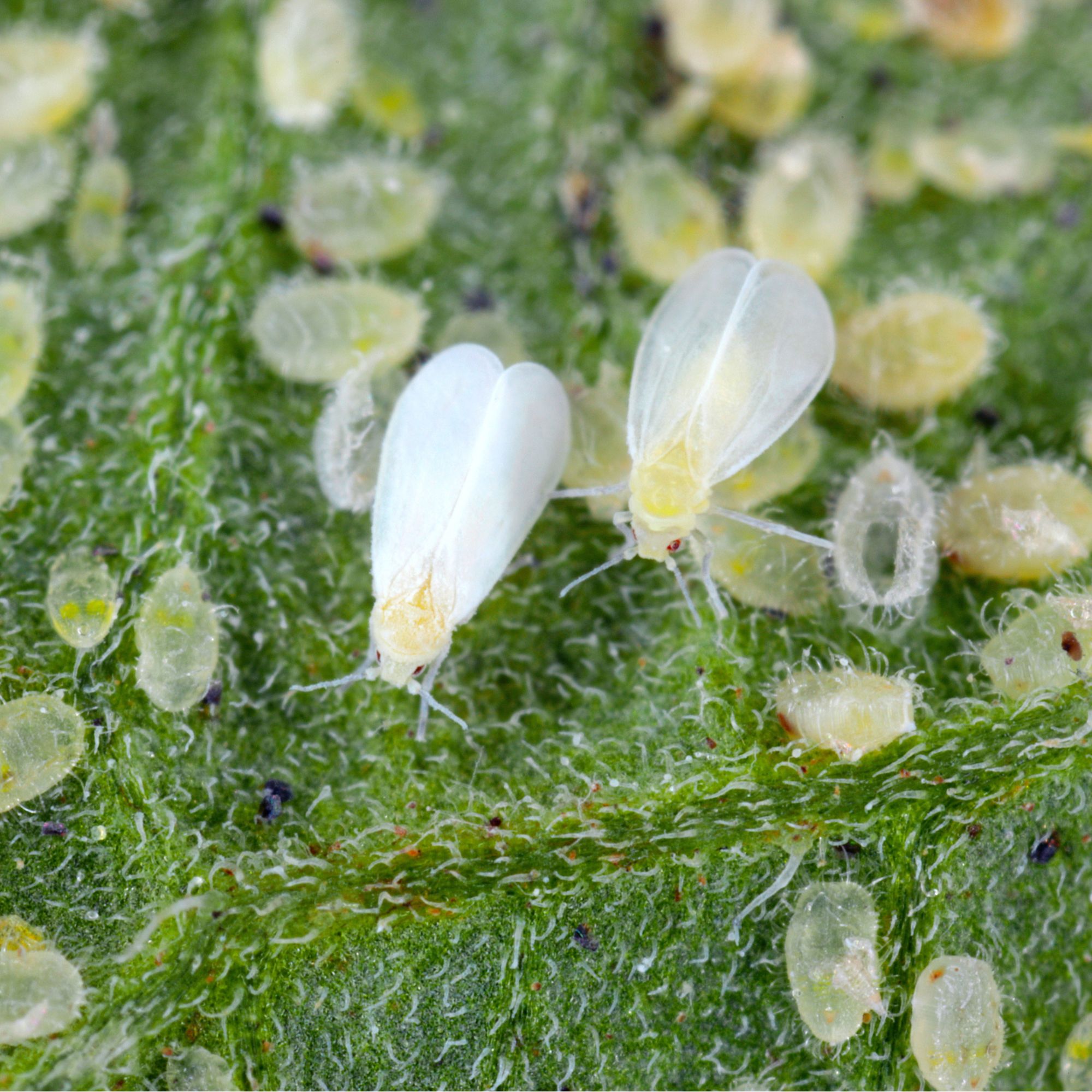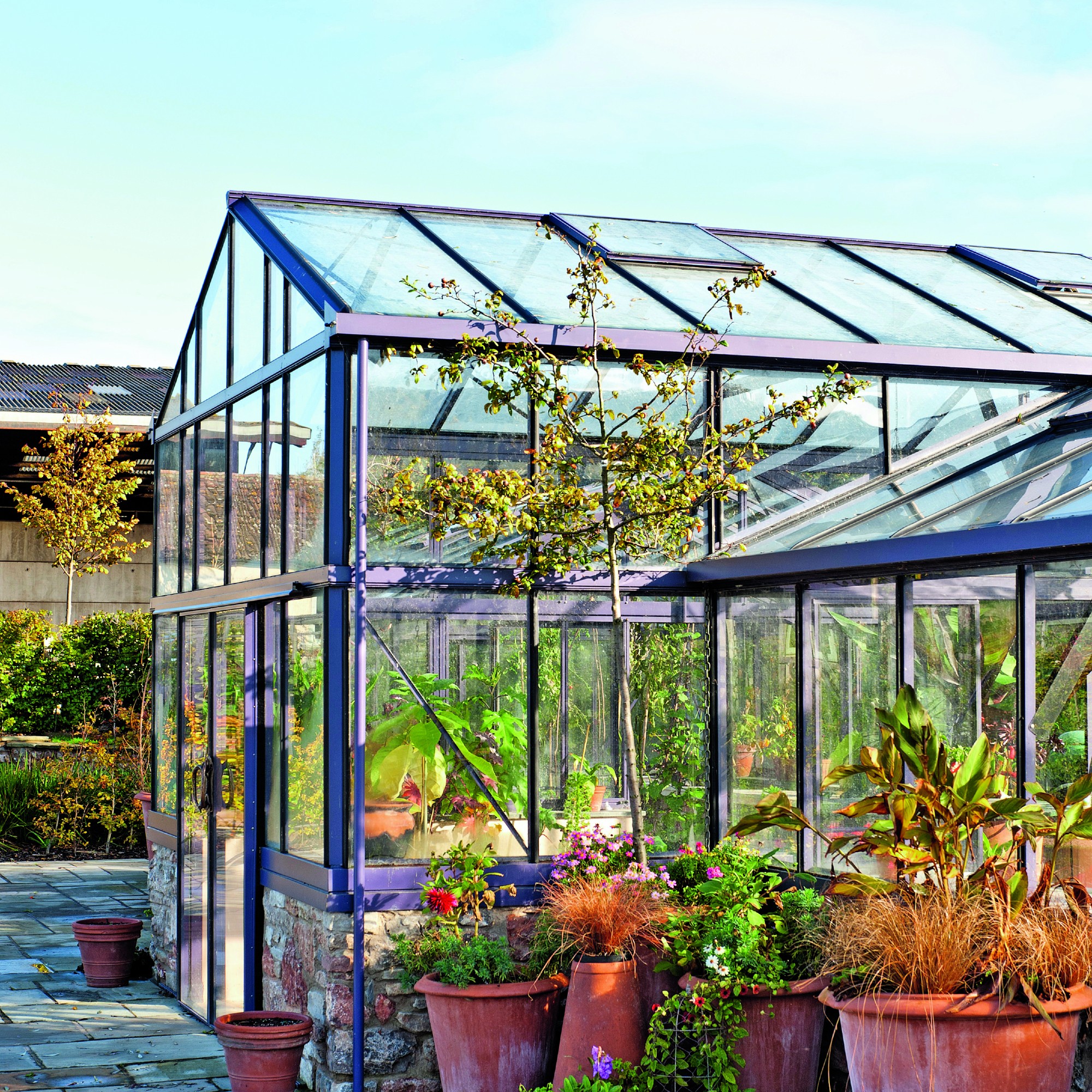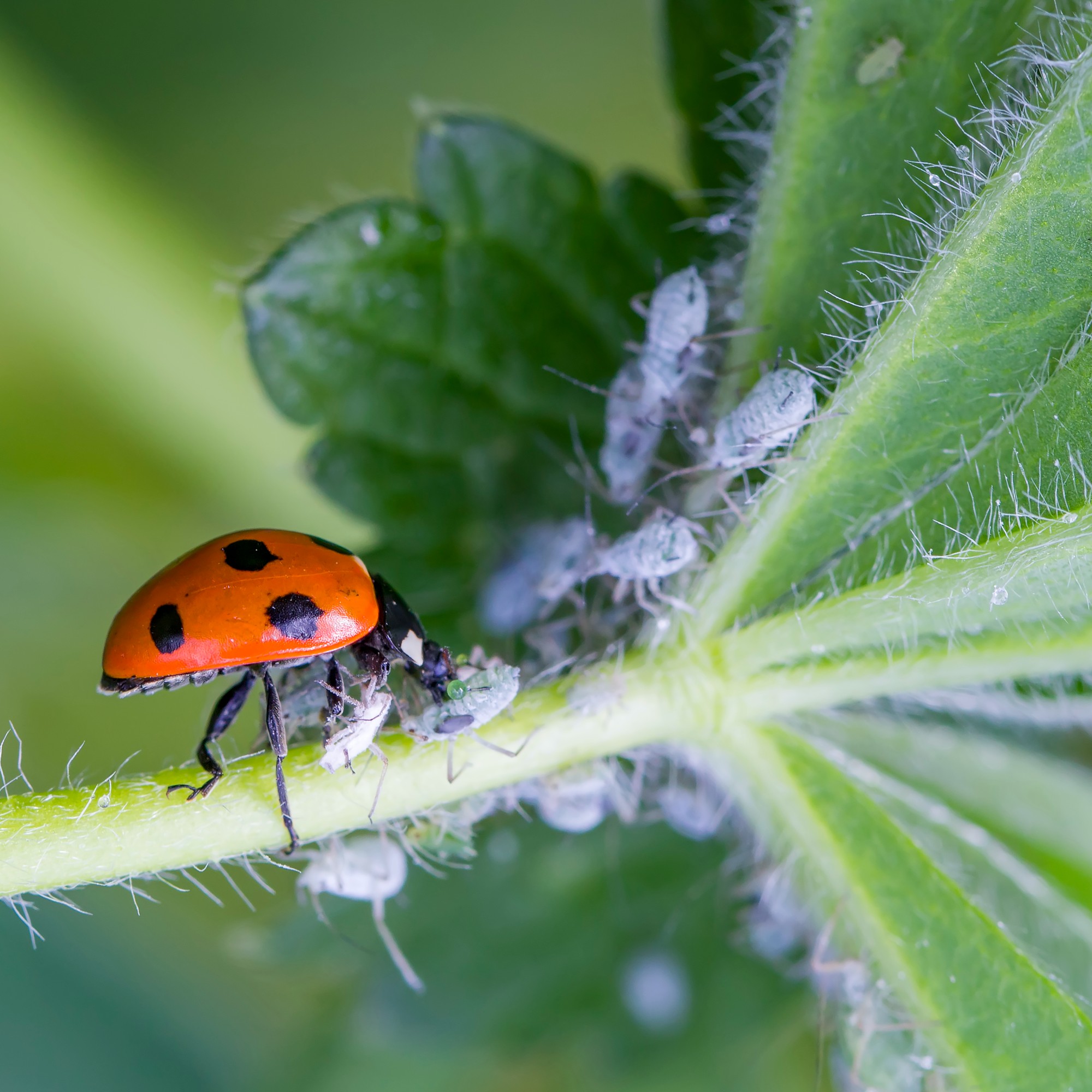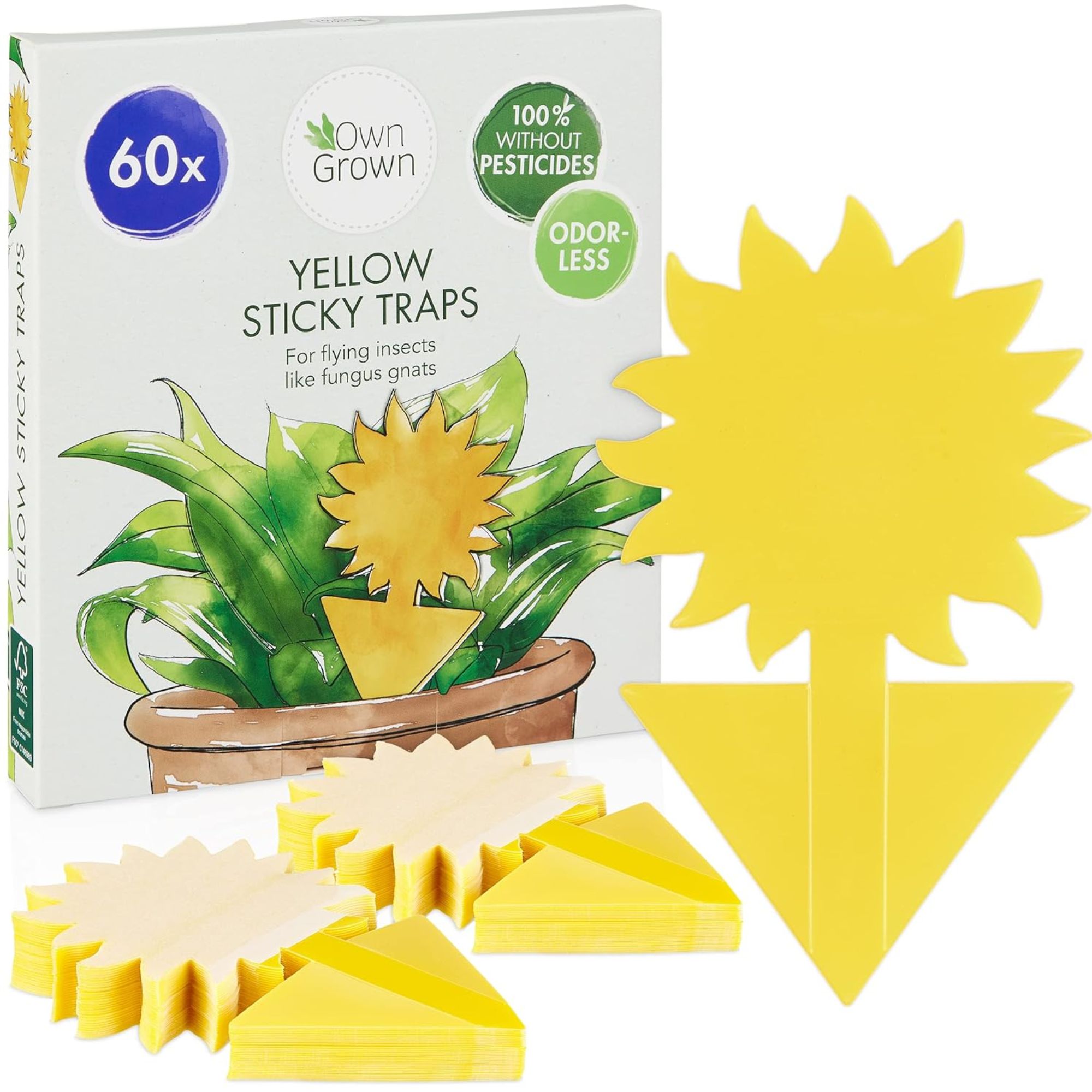How to get rid of glasshouse whitefly – the major greenhouse pest to watch out for
They're coming for your homegrown fruits and vegetables, so here's how to get rid of glasshouse whitefly...


Ah, glasshouse whitefly. They might be active throughout the year, but these notorious garden pests are the ones to watch out for whenever spring rolls around – largely because they have a serious hankering for all your greenhouse-grown goodies.
So, how to get rid of glasshouse whitefly? Ideally before your greenhouse ideas are filled to the brim with a cloud of small white-winged insects desperate to sink their teeth into your cucumbers, tomatoes, peppers, pelargoniums, and more.
'These tiny pests feed on the sap of plants, causing damage to leaves and spreading disease,' explain heirloom veg growing experts Lucy Hutchings and Kate Cotterill of SheGrowsVeg.

Former jewellery designer to the stars turned social media veg grower, Lucy Hutchings launched SheGrowsVeg alongside top marketeer and music festival organiser, Kate Cotterill. They are passionate about gardening, and ensure that their range is entirely open pollinated seed from heirloom or rare origins, meaning they are packed full of nutrients, are outstanding in the looks department and taste phenomenal.
'They are not always immediately visible, as they tend to lurk on the underside of foliage – but an afflicted plant will erupt in a cloud of tiny flies when brushed past,' the duo continue.
Anyone else suddenly feeling itchy? Got a sudden urge to clean your greenhouse from top to bottom? Us too.
Here, then, is everything you need to know about getting rid of glasshouse whitefly...
How to get rid of glasshouse whitefly
Whether it's flies or slugs, no gardener likes to think about a garden pest going to town on their precious plants. It's little wonder, then, that so many of us are keen to learn how to get rid of glasshouse whitefly before they wreak havoc this spring.
Sign up to our newsletter for style inspiration, real homes, project and garden advice and shopping know-how

'Glasshouse whiteflies are small, moth-like insects measuring around 1.5mm in length,' explain Lucy and Kate.
'They have powdery white wings and are commonly found on the undersides of leaves, where they lay their eggs. Both the nymphs and adults feed on plant sap, causing stunted growth, yellowing leaves, and a sticky substance called honeydew, which can attract ants and promote the growth of sooty mould.'
According to the Royal Horticultural Society (RHS), these destructive pests are known to target:
- Cucumber
- Melon
- Tomato
- Peppers
- Chrysanthum
- Gerbera
- Pelargonium
- Fuchsia
- Lantana
- Poinsettia
- Verbena
Signs and symptoms of glasshouse whitefly
As well as the aforementioned cloud of flying white insects, you'll know you need to learn how to get rid of glasshouse whitefly when you start spotting flat, oval, creamy white scale-like nymphs attached to the leaves of your plants.

You may also spot black sooty moulds, which is the result of sticky honeydew falling from the insects and onto your plants.
Natural ways to combat glasshouse whitefly
The RHS recommends that you don't use pesticides, which is why many gardening experts – Lucy and Kate included – will urge you to use one of the following methods to get rid of your glasshouse whitefly instead.
1. Biological controls
'The best way to combat glasshouse whitefly is to use biological controls – essentially another animal that eats the pest you want to be rid of,' say Lucy and Kate.
With this thought in mind, then, they recommend using either Biological Encasia from Amazon or Eretmocerus Parasitoids.
'These are the tiny parasitic wasps that predate upon the white fly, very effectively controlling their numbers, and can be easily bought online,' they explain.
2. Encourage beneficial insects

If you want to learn how to get rid of glasshouse whitefly, Lucy and Kate advise that you encourage their natural predators, such as ladybirds and lacewings, and help them establish themselves in your wildlife-friendly garden.
'These insects feed on whitefly eggs and larvae, helping to keep their populations in check,' the duo explain.
'You can attract these beneficial insects by planting a diverse range of flowering plants and avoiding the use of broad-spectrum pesticides.'
3. Sticky traps
If you'd like to get rid of glasshouse whitefly without welcoming further insects into your garden, Lucy and Kate suggest you 'hang yellow sticky traps near infested plants to capture adult whiteflies'.
'The bright yellow colour attracts the insects, and once they land on the sticky surface, they become trapped and unable to reproduce,' they continue.
'Regularly replace the sticky traps as they become covered with whiteflies or dust.
4 Pruning and cleaning
Finally, but by no means least, Lucy and Kate advise that you 'regularly inspect your plants for signs of whitefly infestation and remove heavily infested leaves to reduce their numbers'.
'Additionally, practise good garden hygiene by cleaning up fallen leaves and debris, as whiteflies can hide and lay eggs in decaying plant matter,' they add.
FAQs
What is the easiest way to get rid of glasshouse whitefly?
If you're still looking to banish glasshouse whitefly from your greenhouse, you can try any of the natural methods listed above – or do as the RHS suggests and try 'removing unwanted plants', as this 'can reduce the number of host plants for glasshouse whitefly'.
It's also a good idea to boost ventilation and keep your greenhouse as clean as you can, too.
Does washing up liquid get rid of whitefly?
Some people swear by adding a few drops of washing up liquid (and a squeeze of lemon juice) to a spray bottle filled with water, before giving it a good shake and a spray to deter glasshouse whitefly.
However, the RHS cautions that 'homemade products are not recommended as they are unregulated and usually untested'.
And just like that, you know exactly how to get rid of glasshouse whitefly and protect your precious plant babies from their devouring ways.
Anyone else suddenly feeling an urge to arm themselves with yellow sticky traps galore?

Kayleigh Dray became Ideal Home’s Acting Content Editor in the spring of 2023, and is very excited to get to work. She joins the team after a decade-long career working as a journalist and editor across a number of leading lifestyle brands, both in-house and as a freelancer.
